by Amy Mullins, PhD, RDN | Apr 3, 2017
 It’s no secret that exercise is good for you and can improve your life in so many ways. The idea of exercise can be daunting for some people, especially if you’ve never done it on a regular basis. You don’t have to go to the gym and lift weights or run a half -marathon to “exercise.” It’s important to keep in mind that many different types of physical activity can be considered exercise and can get you on the path to feeling great every day.
It’s no secret that exercise is good for you and can improve your life in so many ways. The idea of exercise can be daunting for some people, especially if you’ve never done it on a regular basis. You don’t have to go to the gym and lift weights or run a half -marathon to “exercise.” It’s important to keep in mind that many different types of physical activity can be considered exercise and can get you on the path to feeling great every day.
Benefits of physical activity include:
- Increasing your chances of living longer
- Feeling better about yourself
- Decreasing your chances of becoming depressed
- Sleeping well at night
- Moving around more easily
- Having stronger muscles and bones
- Achieving and maintaining a healthy weight
- Being with friends or meeting new people
- Enjoying yourself and having fun!
Consider some new ways to become active such as:
- Volunteering within your community
- Taking group walks around the neighborhood
- Taking up gardening and growing vegetables or flowers
- Doing stretches and chair exercises throughout the day and while watching TV or on the computer.
The idea is to find FUN activities that will keep you moving, active, and engaged. If you decide to start a more rigorous exercise regimen, make sure to ask your doctor first.
Always keep proper hydration in mind, especially when exercising outdoors during the summer heat. Dehydration is a leading cause of hospitalization and serious health problems for older adults. Signs and symptoms of dehydration include headaches, constipation, muscle cramps, dry mouth, sleepiness, and rapid heart rate. It’s important to hydrate yourself with at least eight 8-oz. cups of water during the day. Stay ahead of the game and don’t wait until you’re thirsty to drink… by then, you are already dehydrated.
The National Institutes of Health, National Institutes on Aging recommend making these five tips a priority everyday:
- Try to be physically active for at least 30 minutes on most or all days of the week
- Eat plenty of fruits and vegetables
- Choose foods that are low in added sugars, saturated fats, and sodium
- Pick whole grains and lean sources of proteins and dairy products
- Practice all four types of exercise: endurance, strength, balance, and flexibility
For more information about exercise, hydration, nutrition, and safety for older adults, visit https://go4life.nia.nih.gov/.
by Marie Arick | Feb 14, 2017
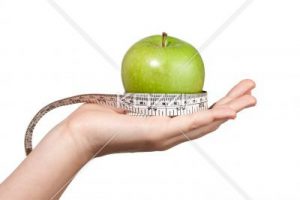
Knowing your waist circumference is a simple way to determine if you are at risk for heart disease. A waist circumference larger than 40 inches for men or 35 inches for women deems a person overweight per National Institute of Health (NIH) guidelines.
It is commonly known that being overweight is associated with a barrage of health problems such as heart disease, hypertension, diabetes, and even some cancers. Where those extra pounds are carried is important to note. When those pounds are concentrated around the waist, it “is an indicator of the level of internal fat deposits which coat the heart, kidneys, liver, digestive organs and pancreas” according to the Heart Foundation, versus carrying those extra pounds on your thighs and/or hips.
Waist circumference is a good indicator to utilize. It has been discovered in many cases that Body Mass Index (BMI) can overestimate body fat in certain people with high amounts of muscle mass. According to the NIH, “the good news is even a small weight loss, between 5 and 10 percent of your current weight, will help lower your risk of developing diseases.” Weight loss should be conducted in a healthy manner and incorporate physical activity. The Choose MyPlate website provides free exercise and dietary tracking and great practical information to aid in one’s journey.
The really simple way to predict your risk for heart disease can be as easy as measuring your waist. Taking a few moments to complete this task can be an enlightening step in managing your health and possibly prevent you from ‘waisting’ your heart away.
by Melanie Taylor | Dec 5, 2016
As the holiday season quickly approaches many people become overwhelmed with all of the activities, decorating, and shopping that needs to be completed. Here are a few tips to save energy, time and your nerves.
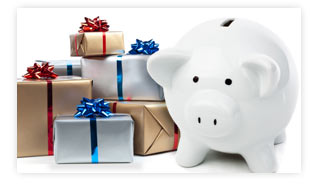 Let’s begin with 5 Steps to Seasonal Savings:
Let’s begin with 5 Steps to Seasonal Savings:
- Recognize Your Seasonal Stressors: Know your personal stressors—such as family, friends, work, travel, social outings and traditions (both old and new)—then you can be less stressed this holiday season. Marketing ploys sneak into every stressor, and retailers want to ensure they get their piece of the holiday pie by using marketing gimmicks to lure you into shopping with them. Do you find yourself with the overwhelming desire to get everything on your child’s list? If so, consider going without a list or setting limits, and communicate with your child. Often, parents do not involve their children in the holiday spending process. Children need help recognizing when and how they have been targeted and persuaded to want the latest and greatest item. Children also need to understand that a budget is necessary and saying “no” to an overpriced item is okay.
- Develop a Holiday Spending Plan—Make a Budget: Ask yourself: How much have I saved? How much can I save before the holidays? Am I comfortable creating debt? Am I comfortable saying “no”?Start with knowing how much you can spend and create a spending plan, which is critical for successful money management for the holidays and all year long. A few dollars from your paycheck each week adds up quickly over a year. You can also take advantage of weekly automatic transfers into your bank account, or join a holiday savings club at a local credit union. If your holiday budget shows you are spending more money than you have, then you’ll likely take on debt. If this is the case, you should also create a plan for paying off purchases made with credit. Prioritize your purchases and consider omitting purchases that require taking on debt.
- Develop a Holiday Spending Plan—Create a List and Stick to It: Make sure you have a list of everyone you plan to buy for during the holidays and of other additional expenses. Decorations, cards, postage, gift wrap, food/entertainment, and travel are additional costs that can drastically impact the holiday budget. Don’t forget to use catalogs, internet surfing for comparison shopping, and barcode scanning apps. Shopping online also limits impulse purchases, and it allows you to avoid long lines, huge crowds, and the lure to eat out while shopping. Be sure to use coupons whenever possible, and be sure to take advantage of the year-end sales. Once you’ve researched and set your budget, you’re ready to start shopping.
- Alternatives to Pricey Presents: If you have a large family, start by thinking outside the box. Consider a gift exchange by drawing names from a hat, which can allow you to put more thought than money into selecting a single gift. You can also buy a single gift for an entire family—perhaps an entertainment basket filled with DVDs and microwave popcorn. Oftentimes, thoughtful and more creative gifts can come from shopping with local businesses. Locally grown fruits and vegetables, honey, or an item from a local artist are just a few suggestions of local products. If you are feeling crafty, then you could make and give holiday arrangements such as centerpieces and decorations. Another idea for the holidays is to donate to a charity in someone’s name instead of gift giving. You can even take the idea of giving to charity to your office. Pool money you would have spent on gifts with your participating colleagues, draw a colleague’s name, and donate the money to a charity of his or her choice. Another gift idea for close friends and/or family is the “gift of time.” Create a coupon book or certificate that gives a loved one the gift of your time (a specific chore, a trip to the park, babysitting, slumber party for the kids).
- Fine-Tuning Your Financials: Use cash and/or debit cards when at all possible. Money coming directly out of your pocket will likely make you think harder about your purchase. If you are going to use a credit card, make sure you have a plan in place to pay it off when the bill is due. You also need to understand the allure of paying with credit. When you’re not paying with “real” money, your buying can easily get out of control, and the shopping process may not seem as painful in that moment. It may be appropriate to tell your older children how much they each have in the budget for holiday spending. When the family is on the same page, it can alleviate some stress. Refocus your family’s thoughts from the material goods to the real meaning of giving and receiving. Knowing your specific situation, making informed decisions, and communicating with loved ones can reduce the effects of holiday stressors.
Let’s take a look at some affordable and DIY Christmas gifts that will be truly appreciated by the recipient.
For the gardener in your life:
Terrarium Kit
Materials:
- One – 3 1/2″ x 7″ canning jar with top
- Small stones (enough to fill 1 inch in jar) You can buy pretty river rocks at your local garden shop or just collect some stones outside.
- A few tablespoons of activated charcoal (found at any pet store’s aquarium section)
- 1 small Ziploc bag
- 3 1/2″ x 5 1/4″ printed terrarium instructions card on card stock (download from witandwhistle.com or create your own)Step 2: Slide an instruction card into the front of the jar. Secure the card amongst the rocks. Step 4: If you’re feeling crafty you could add a decoration or two (plastic or clay mini mushrooms, insects, gnomes, fairies, etc.) in your terrarium kit.
- Step 5: Tie some twine or ribbon around the jar, and you’re done. You don’t even need to wrap it!
- Step 3: Pour a few tablespoons of activated charcoal into a small Ziploc bag and add it to the jar.
- Step 1: Put about an inch of small stones in the bottom of a jar.
For the spa lover in your life:
Basic Silk Bath Bomb
Materials: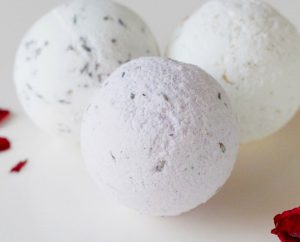
- 1 cup Citric Acid (found in canning section of grocery store)
- 3 cups Baking Soda
- 1 teaspoon Essential Oil (purchase at local health food store)
- Witch Hazel Spritz (purchase in pharmacy section)
- Dry Pigment Colorant – if using
- Round mold to shape the bath bomb (Molds are round plastic ornaments found at your local craft store.)
- Directions:
- Blend the citric acid and baking soda—add colorant and fragrance oil.
- Spritz, Witch Hazel onto your batch using a squirt bottle with one hand while stirring with the other until the bomb sticks together when squished. (it will have the consistency of wet sand)
- Form the bomb in the molds.
- Air-dry for 3 or 4 hours spritzing a few times – allow to set overnight (The Witch Hazel forms a crust on the outside that prevents them from cracking and falling apart; however, they’re still fragile)
- Wrap in tissue paper or cellophane. Tie a bow and you’re done.
Other DIY ideas…homemade soaps, herb infused oils, jams and jellies, baked goods, hot cocoa mix, etc.
When we think of the holidays, we often think about family, togetherness, giving, and celebrating. While the holiday season should be a time of enjoyment, there are many events associated with the season that can cause stress. Remember, in the long run the memories will be of time spent together, not the gifts they received. So, be sure to plan ahead, take a deep breath, and enjoy the special holiday moments.
If you have further questions, please contact your local UF/IFAS Extension Office.
Resources:
“Five Steps to Seasonal Savings” – UF/IFAS EDIS Publication #FCS5267
“Managing Stress During the Holidays” – UF/IFAS EDIS Publication #FCS5266
witandwhistle.com
by Heidi Copeland | Nov 30, 2016
 Many of us can agree, being around family can make simple things in life more special! Whether it’s time spent together during holidays, celebrating birthdays, or simply enjoying togetherness, family events can make life memorable. Why wait until special occasions to show your family that they matter? Dining together can make simple things feel special every day!
Many of us can agree, being around family can make simple things in life more special! Whether it’s time spent together during holidays, celebrating birthdays, or simply enjoying togetherness, family events can make life memorable. Why wait until special occasions to show your family that they matter? Dining together can make simple things feel special every day!
Dining in with your family is one of the easiest ways to incorporate spending quality time together… on a daily basis. Knowing that schedules can make this task very difficult to implement but understanding the benefits will help encourage us to make the time for this important ritual. Research studies show that frequent, positive mealtime experiences can lead to better communication among family members, improved performance at school, and enhanced reading levels, as well as better overall nutrition. During meals, parents are able to teach their children how to actively listen and express themselves through conversation. As a result, these mealtime conversations expand children’s vocabulary and increase their reading skills. Equally important is that eating together helps encourage healthy eating habits.
Make plans to set aside December 3, 2016 as Dine in Day. This initiative, started three years ago by the American Association of Family and Consumer Sciences (AAFCS) promotes the importance of group meals in fostering family and community relationships, encouraging healthy diets and stretching food dollars. AAFCS cares about family mealtimes and is spreading awareness.
Here are some Dine In Day conversation starters and tips to create an enjoyable and relaxing atmosphere for your family:
- Start with minimal distractions. Turn off all devises…televisions, iPads, laptops, and set aside cell phones.
- For families with preschoolers here are some conversation starters
- If you could be any animal in the world for a day, which animal would it be? Why?
- What made you happy (or sad) today? Why?
- Who did you sit next to (or play with) at school today? What did you talk about?
- Would you like to help plan dinner for tomorrow night? What foods would you like to help cook for dinner?
- For families with adolescents and young adults here are some conversation starters
- Ask about their hobbies, clubs, or extracurricular activities
- If you could have one day free of all responsibilities what would you do?
- Share funny stories and discuss light current events
Remember, eating together matters. Try to create a positive atmosphere before and during meals.
- Respect and involve every family member giving everyone an equal opportunity to share an opinion without teasing or criticizing.
- Download free conversation starters at www.school-wellness.org
- Background music can be a nice addition!
Individuals, families and groups can pledge to dine in December 3 at http://bit.ly/2dPj58G . Diners can also participate on social media by sharing photos and using the hashtags #FCSdayFL and #healthyfamselfie.
Build stronger relationships and positively impact your children’s growing values. Don’t wait until special occasions to reap the dining together benefits, dine in now!
For more information on the importance of family meal
- Lyttle and E. Baugh, The Importance of Family Dinners (FCS2286), Department of Family, Youth and Community Sciences (Archived).
- Paredes and K. Shelnutt, Raising Healthy Children: The Importance of Family Meals (FCS8925), Department of Family, Youth and Community Sciences (06/2010).
Tamarah Ulysse FSU Intern, Family and Child Sciences
Edited by: Heidi Copeland
Extension Agent I
Family and Consumer Sciences
615 Paul Russell Road
Tallahassee, FL 32301-7060
850/606-5200

by Ginny Hinton | Nov 25, 2016
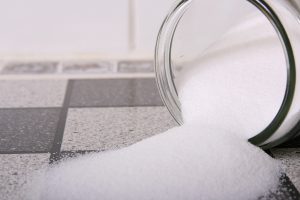 It’s a fact. We need salt in our diets. Our bodies need sodium, which we usually get through salt, to maintain fluid balance and blood volume. Unfortunately, most of us consume at least twice as much sodium as we need.
It’s a fact. We need salt in our diets. Our bodies need sodium, which we usually get through salt, to maintain fluid balance and blood volume. Unfortunately, most of us consume at least twice as much sodium as we need.
The main culprit for sodium intake is not the salt we sprinkle on food, nor is it the salt we use when we cook. It’s the processed foods we grab to make meal preparation quicker and easier – the breads, soups, pizza, cheese, snacks, and more. For example, most of us require only 1,500 mg of sodium, or ¾ teaspoon, per day. Just one slice of a typical frozen pizza contains more than half that amount.
It’s a good idea to buy fresh, frozen, or low sodium veggies, choose roasted meats over processed lunch meats, and read labels to find low sodium choices when possible. How do you know your item is low sodium? It should contain 140 mg or less of sodium per typical serving. If that’s hard to remember, just look for foods with a Daily Value (DV) of 5% or less.
Soup is one of the worst offenders when it comes to sodium content. Unfortunately, when commercial soups are cooked at a high temperature long enough to kill potentially harmful bacteria, the soups lose some of their flavor. Salt offers a cheap and easy way to make up for that loss. Still, many soups can be a great choice, especially if you’re counting calories. How can you enjoy a quick cup of soup without loading up on the salt? Start with a can of light or reduced sodium soup then add your favorite fresh or unseasoned frozen veggies. You’ll still get more sodium than you would with homemade soup but you’ll get much less than in typical canned soup, with an added nutrient and fiber boost.
With a few changes, you can reduce your sodium and still enjoy tasty meals!
References:
University of Florida IFAS Extension, Keeping the Pressure Down, Lesson 4: DASH Diet – Balancing Minerals.
Dahl W & Foster L. Shopping for Health: Sodium
Nutrition Action, Do You Want to Discover Ways to Cut Salt from Your Diet? 10/17/2016
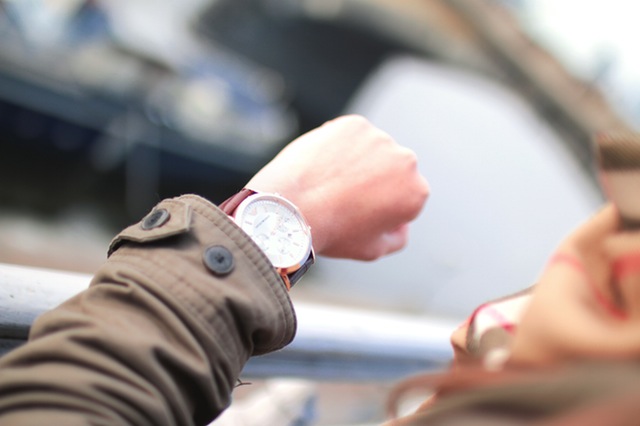
by Amy Mullins, PhD, RDN | Nov 16, 2016
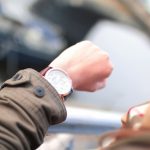 Ever feel like you’re moving through your work day at the speed of light with barely enough time to eat, much less eat healthy? The combination of stress, poor eating habits, and lack of exercise can lead to becoming overweight and the development of chronic health conditions such as type-2 diabetes, high blood pressure, and cardiovascular disease. Numerous studies have shown that stress can lead to poor nutritional choices including:
Ever feel like you’re moving through your work day at the speed of light with barely enough time to eat, much less eat healthy? The combination of stress, poor eating habits, and lack of exercise can lead to becoming overweight and the development of chronic health conditions such as type-2 diabetes, high blood pressure, and cardiovascular disease. Numerous studies have shown that stress can lead to poor nutritional choices including:
- Choosing a sugary and/or caffeinated drink over water
- Grabbing convenience foods more often, which usually are not healthy choices
- Forgetting meals and making poor choices later in the day, ultimately eating more calories, sugar, fat, and sodium
The fact is we are all busy. But, if we don’t take the time to care for ourselves, we may be headed down a dangerous path of self-destruction. It only takes a small amount of time to take the right steps toward better health.
Here are some tips to get you started:
- Simplify! Instead of being overly concerned with counting calories or measuring portion sizes, think of your diet in terms of color, variety, and freshness.
- Start slow and make changes to your eating habits over time.
- Every change you make to improve your diet matters!
- Think of water and exercise as food groups in your diet.
- Moderation is key. Try not to think of certain foods as “off limits,” but, rather, think smaller portions.
- It’s not just what you eat, it’s how you eat. Mindful eating – listen to your body and take time to enjoy your food and mealtimes.
- Fill up on fruits and vegetables.
- Choose whole grains.
- Focus on healthy fats and limit saturated fats and fried foods.
- Try different types of lean protein.
- Limit sugar and salt.
- Plan Ahead
- Take the time to make a grocery list before going to the grocery store
- Plan and pack nutritious snacks for work
- Prepare meals for the week ahead of time
- Consider your options when eating out
- Portion out meals and snacks ahead of time
- Have water available all day
- Incorporate Exercise into Your Daily Routine
- Choose the stairs over the elevator
- Walk during breaks
- Turn housework into exercise
- Walk the dog
- Park further away when you drive to the store
- Play outside with your kids
Remember, nothing is more important than your health and the health of your family. Set a good example for those you love by taking care of yourself. They will be thankful you made plans to be around for many years to come!
For more information about this topic or other nutrition and wellness-related topics, contact Amy Mullins, MS, RDN at amymullins@ufl.edu.
 It’s no secret that exercise is good for you and can improve your life in so many ways. The idea of exercise can be daunting for some people, especially if you’ve never done it on a regular basis. You don’t have to go to the gym and lift weights or run a half -marathon to “exercise.” It’s important to keep in mind that many different types of physical activity can be considered exercise and can get you on the path to feeling great every day.
It’s no secret that exercise is good for you and can improve your life in so many ways. The idea of exercise can be daunting for some people, especially if you’ve never done it on a regular basis. You don’t have to go to the gym and lift weights or run a half -marathon to “exercise.” It’s important to keep in mind that many different types of physical activity can be considered exercise and can get you on the path to feeling great every day.








